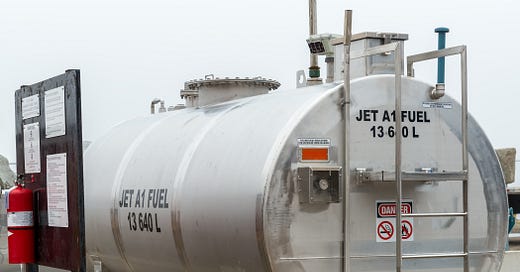Sustainable Aviation Fuel Blends
We continue our discussion to do with Sustainable Aviation Fuels (SAF).
In the first post in this series (Need for Sustainable Aviation Fuels) we identified some of the reasons that the civilian airline industry is putting so much effort into SAF technology. If the industry cannot find an economical substitute for kerosene then its future looks murky indeed.
The U.S. Department of Energy publishes information to do with SAFs at its Alternative Fuels Data Center. The first sentence reads,
Sustainable aviation fuel (SAF) is an alternative fuel made from non-petroleum feedstocks that reduces emissions from air transportation. SAF can be blended at different levels with limits between 10% and 50%, depending on the feedstock and how the fuel is produced.
So, immediately we learn that SAFs contain at least 50% fossil fuels in the form of Jet A.
It is not clear if it will be possible to use 100% ‘pure’ SAF sometime in the future. One reason for the slow transition could be that the industry is being very cautious ― and rightly so. Another reason is that conventional fuel contains aromatics that help lubricate parts and maintain seals.
Also, there are at least seven different technologies for making SAFs. The composition of the resulting fuel is slightly different for each technology. Any problems created by these differences need to be resolved.






